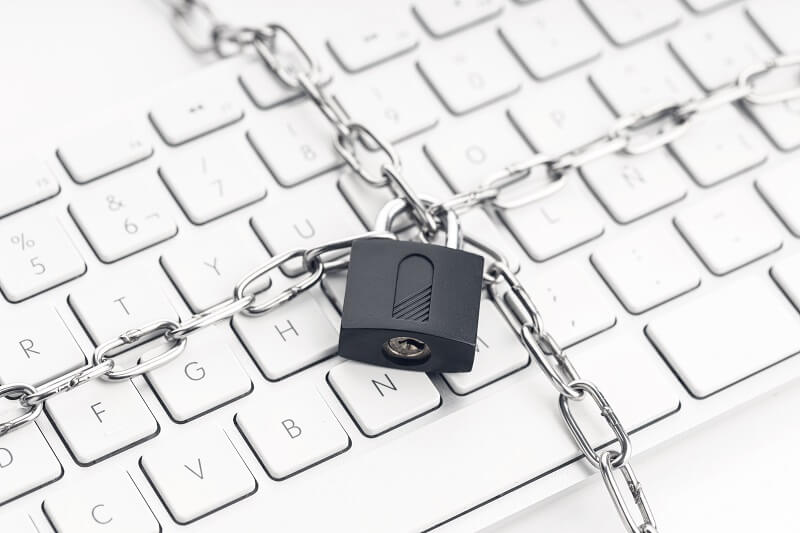A ransomware attack – too common to ignore?
A ransomware attack is a type of malware – the criminal encrypts files on your computer or network so you can no longer access or use them. The end goal is always the same – as the name suggests, you have to pay ransom for the hacker to decrypt the files.
The rates of crime are staggering – in 2021, a new business became a target in a ransomware attack every 11 seconds.
How to recognize ransomware?
Once you fall victim to a ransomware attack, you know it. You will not mix it with other types of cyber threats. You cannot log into your accounts, see or use files, and, most importantly, shortly after you receive payment instructions.
The ransom price ranges from hundreds to millions of dollars, usually paid in cryptocurrency. Over time, some regulations around Bitcoin and other cryptocurrencies were discussed and introduced. Yet, Bitcoin remains the main medium for ransomware payments.

Who usually falls victim to it?
During the first half of 2021, the number of ransomware attacks almost doubled than a year before.
If your company operates in the United States, you have the highest chances of becoming a ransomware target globally. Among all the victims, the United States becomes a target at the spectacular 54.9% rate.
Usually, there are two main categories by which hackers target their victims:
-
It is easy to hack. For instance, small to medium-sized businesses, universities, or other industries that do not have large, strong cybersecurity teams. They become the target because it is relatively easy to find weak links in their cyber defense.
-
Likelihood to pay a huge ransom. For example, large corporations, government agencies, financial service providers, or law firms. These types of organizations are likely to pay because they need to protect their reputation, access data immediately, and have enough resources at hand.
The highest-profile ransomware cases in 2021
JBS
One of the biggest meat suppliers in the United States, JBS USA, was hacked in May 2021. The company paid the cybercriminals an $11 million ransom in Bitcoin to prevent additional losses due to operational timeout. The third biggest ransomware group REvil organized the crime.
Colonial Pipeline
Darkside, the fourth biggest hacking group, successfully targeted Colonial Pipeline. The company has the largest pipeline system for refined oil products in the United States. At the beginning of May 2021, the cyberattack shut down the main pipeline that carried gas to the East Coast.
Although the Colonial Pipeline paid a $4.4 million ransom in cryptocurrency, the consequences were far-reaching. In the following days, the gas price jumped to $3 per gallon – the record in the last seven years.
CNA Financial
CNA Financial, among the largest commercial insurers in the US, became a victim of a “sophisticated cybersecurity attack”. The company network was totally disrupted.
Two months after the negotiations with the cybercriminals, the company paid a $40 million ransom to receive their data back.

How can you protect yourself from a ransomware attack ?
As an individual or business user, you can take preventative measures to protect against ransomware infections. For that, you have to understand the ways people and companies become victims of a ransomware attack.
- Learn to recognize social engineering techniques.
Among the easiest ways to become a victim of a ransomware attack is to fall into the social engineering trap. Beware of trojans – tempting offers that you can download to your PC or that are attached to suspicious emails. Most likely, you will not receive a $1000-worth seminar for free; you will download malware instead.
- Updates, updates, updates.
Make sure all your software and devices are updated. Keep an eye on and run a few periodical computer security scans in your antivirus and antimalware programs.
- Protect your sensitive credentials.
The larger the corporation you work in, the more valuable are your login credentials ( as much as $500,000). Always use only random, complex passwords to log into the systems, and never reuse them. Store your passwords in a secure password manager.
- Back up your files.
Frequent backups will not directly protect you from a ransomware attack. However, if the attack does happen, with backups in hand, you minimize your loss. Copies of sensitive files and information provide you with a winning position during negotiation, you protect your company from downtime.
- Train your employees.
Make risk management your priority. Study the cases of past ransomware attacks (such as Gigabyte that fell victim twice within three months) and construct your preparation and defense strategy. Make sure each employee knows the risk and the personal input towards a more secure work environment.
Prevention is always cheaper than suffering from a ransomware attack. Start today!




